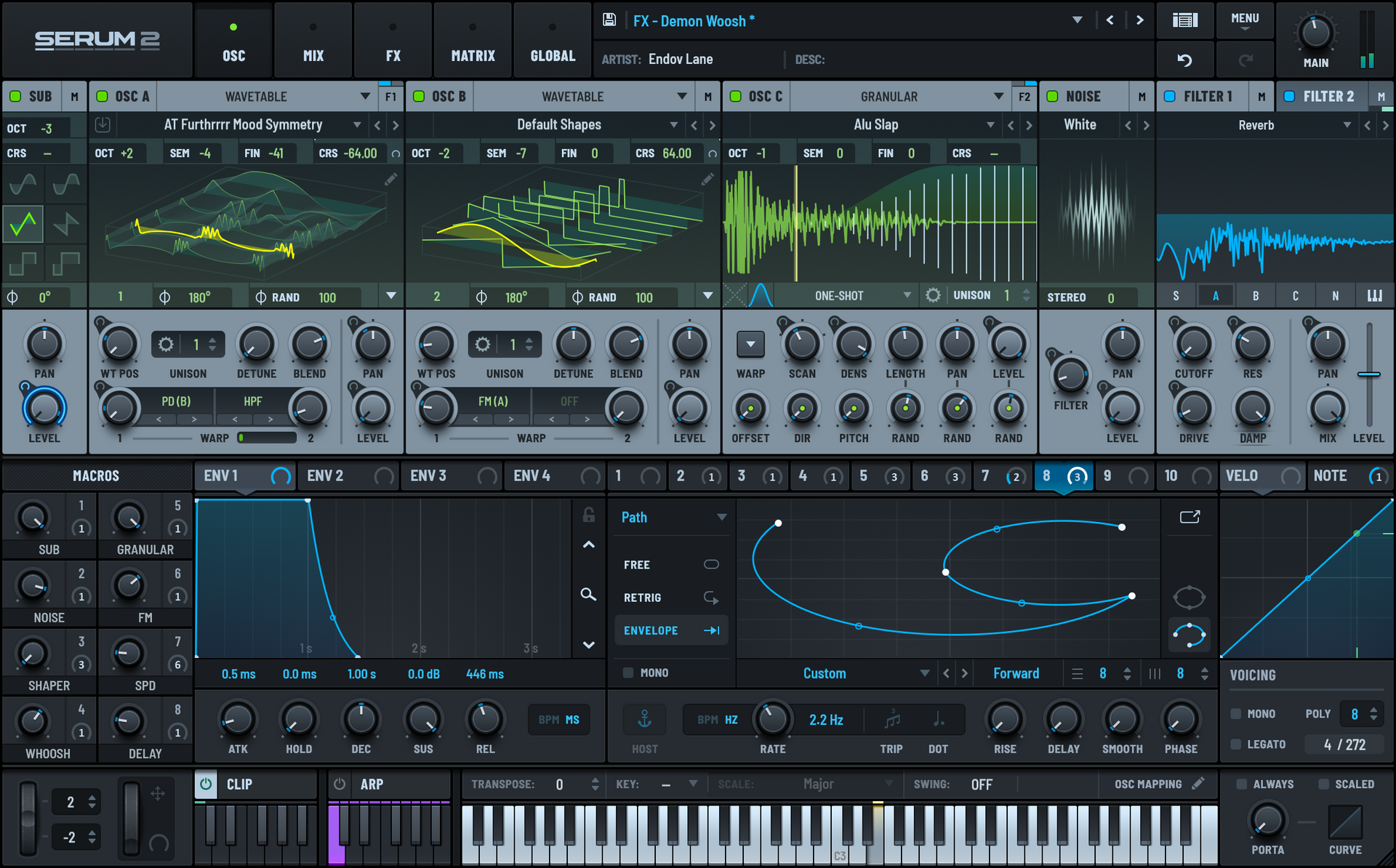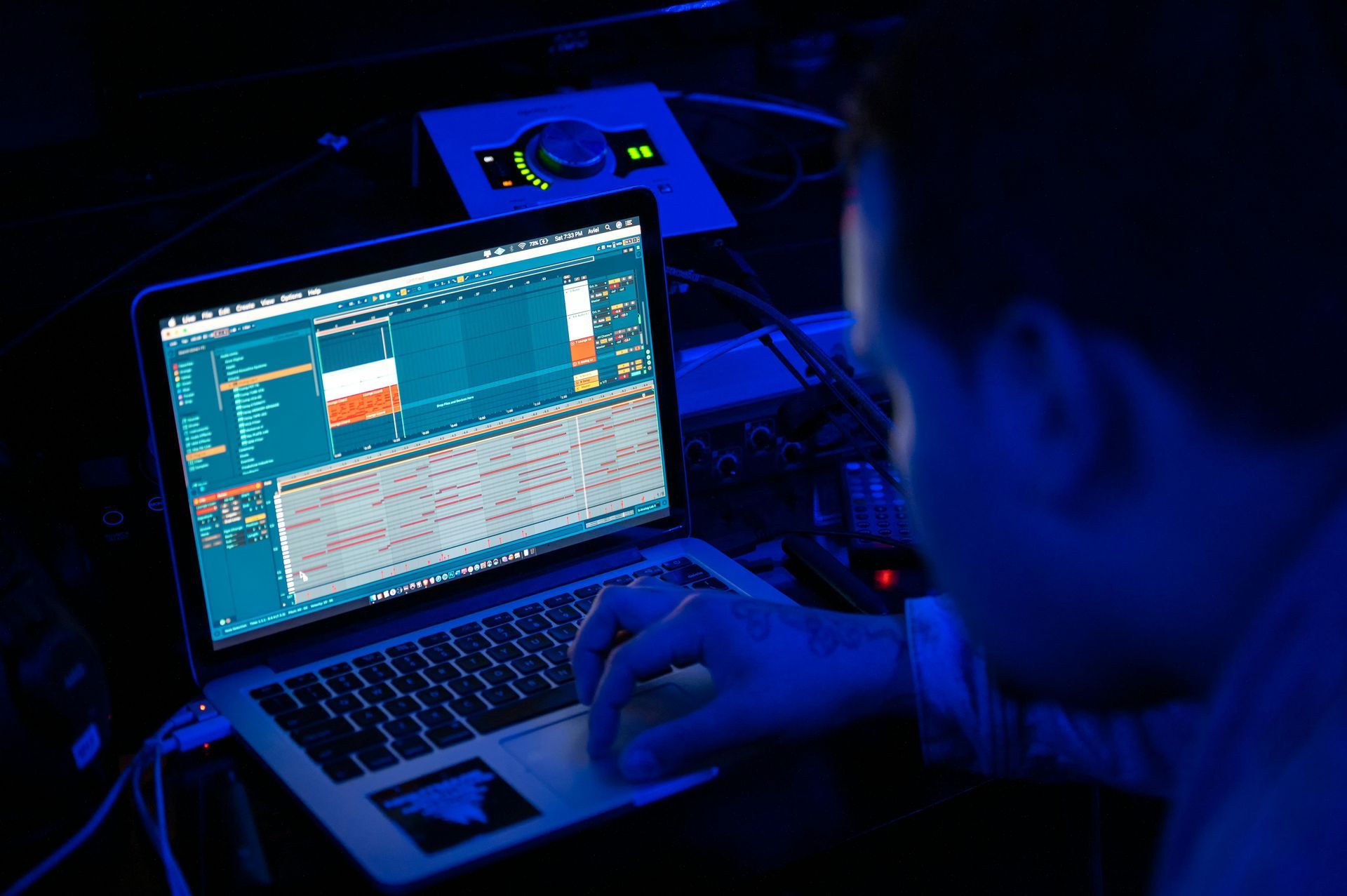Song Finishing Checklist: 10 Ways to Finish Your Mix
This song finishing checklist will help you work through your mix and take it to completion. Use it to identify and fix issues with your project.

How Do You Know When Your Song is Finished?
One of the toughest tasks in music production is deciding when a mix sounds finished. Knowing when your mix sounds finished is an artistic judgment. However, there are techniques to help you get your music over the finish line.
Follow this ten-step song finishing checklist before sending your mix off for mastering.
1. Check Your Levels
Play your song and check all your levels. Ensure the audio signal flow is at an optimum level without clipping as it passes through the various processors and mixer stages. Also, check the master level to make sure your mix has enough headroom for mixing or mastering.
Monitor Track Levels
For best results, keep the master volume fader at “unity” which is 0 dB. Also, try to keep the master volume level at about -3 to -6 dB when mixing. These level averages ensure you have enough headroom for the mastering process. Also, monitor your track volume levels. Maintaining optimal levels prevents overloading the master. You can also keep track volume faders at 0 dB for the highest resolution and then use a gain plugin to adjust levels.
Monitor Device Inputs and Outputs
Monitoring the input and output levels of devices is also crucial. Avoid running a “hot” signal into a plugin. Overloading a plugins input signal will give you poor results. Ensure there’s enough headroom for the plugin to process the audio. A plugin that’s clipping will affect all other plugins that come after it in the device chain.
Most plugins have an output gain control to adjust the output signal level. Many even have an input control to adjust the incoming signal level. Use these controls to balance levels across the entire device chain. If the plugin doesn’t have an output control, insert a gain plugin after it.
2. Check Your Mix in Mono
Checking your mix in mono is vital. Listening to your mix in mono helps identify issues with the stereo image, phasing, volume, clarity, and more. Mixing in mono also helps ensure your mix translates on mono speaker systems.
Bonus Mixing Tip: Placing your low frequencies centrally in the mix is important. Kick and lower bass frequencies should always be in mono for several reasons. Keeping low frequencies in mono retains punch, helps avoid phasing issues and allows the low-end to translate on mono speaker systems. Also, low frequencies carry a lot of energy and will occupy more space in a mix than higher frequencies. Centering them clears space for elements with stereo information.
3. Check Each Track in Solo
Soloing each track helps identify any mix issues. Check for clicks, pops, hums, rumble, digital distortion, and other unwanted noises. The mastering process can emphasize these noises if not fixed. Many of these mix issues are caused by:
- Audio clipping
- Poor recordings
- Clips not having fades
- Plugins emitting noise
- Bad or outdated plugins
- Feedback from In/Out routing
- Automation cutting off sounds
- Warped or time-stretched audio
- Mixing or sound design decisions
- Sounds not aligned from groove or arrangement decisions
Soloing tracks and bringing them in one at a time also reveals mix issues. For example, set a loop around the main section of your song. Then bring in one element at a time to make sure all the parts sound clear and work together. This move may reveal an element buried in the mix or masked by another sound.
4. The Mute Test
The mute test is similar to the soloing technique. Set a loop around a section of your song. Play the song with all the elements unmuted. Next, mute one element at a time to hear how each part contributes to the mix. Listen for any difference in the mix when you mute a part.
If you find an element that doesn’t contribute to the mix, delete it. If you don’t need it, delete it! Unnecessary sounds take up valuable headroom.
5. Check Your Music Arrangement
Music arrangement is the art of taking your musical ideas and laying them out along a timeline to build a final piece of music. When working in Ableton Live, the Arrangement View provides a space to arrange, edit, and finish songs.
Here are a few things to check your musical arrangement for:
- Song structure: Does your mix have clearly defined sections such as an intro, verses, choruses, bridges, breaks, and the outro?
- Busy sections: Are there sections of the mix that sound too busy? Are there any areas where the sounds are clashing or masking each other?
- Empty space: Are there any areas in the mix with silence or empty space? Too much empty space can sound boring or less interesting.
- Transitions and fills: Does the mix transition well from one section to the next? Are the transitions smooth and effective? Is there too much or little energy and tension during buildups? Does it sound awkward when bringing in or dropping any elements?
- Variation: Are there changes occurring every 8 or 16 bars? Does the song progress or does it sound static and boring?
- Movement: Do any parts sound repetitive and stagnant? Can you add movement to elements with automation, auto-panning or modulation to make them more interesting?
- Harmonic structure: Do all the elements sound good together? Are any elements clashing? Does the combination of elements sound pleasing?
- Dynamics: Does the mix have loud and soft parts? Does the mix vary in energy and intensity? Is there tension and release?
- Cohesiveness: Does the entire mix sound complete and cohesive? Do all the sections make sense and flow?
- Duration: Is the mix too long or short? Should any sections be shortened or cut?
6. Check for Phase Issues
It’s crucial that you fix phase problems. Phase cancellation is an audio phenomenon that occurs when similar waveforms work against each other. Waveforms with the same frequency cancel each other out when they are out of phase.
Phase issues also cause elements in the mix to sound weak, thin, and hollow. They also lose volume and punch or disappear in the mix. Phase cancellation is a serious issue, and there are various reasons it occurs.
Check for phase issues with a phase metering plugin or by switching your mix in mono. Insert your metering plugin on the master or single tracks to diagnose phase problems.
7. Compare Your Mix with a Reference Track
Reference tracks are professionally mixed and mastered songs you use as a tool to either measure your mix against or use as a roadmap to guide your arrangement.
Referencing is one of the best and most helpful mixing techniques to learn. Comparing your mix to a commercial ready track will help you achieve professional-sounding mixdowns and masters.
Reference tracks also guide your mix decisions. Quickly switch between your mix and a reference mix to help you identify what’s lacking. This technique is an easy way to reveal problems you may not have noticed. Below are a few suggestions to listen for:
- Loudness: Compare your overall average loudness to the reference track. You can also check perceived loudness with an RMS or LUFS meter plugin inserted on the master channel.
- Width: Listen to where particular elements are panned in the mix. Also, pay attention to how wide the overall mix is in the stereo field.
- Depth: Listen for front-to-back placement. For example, elements that are either louder, brighter, or have less reverb will sound closer and more up-front in the mix. Conversely, sounds that are quieter, have more low-end or reverb applied will sound farther away.
- Tonal Balance: Compare how loud the elements are to each other and balance the levels. For example, is there too much low-end or frequency masking? Also, pay attention to whether the mix sounds dark or bright, full or thin, clear or muddy, warm or harsh, and so forth. Last, use a spectrum analyzer plugin to see any noticeable peaks and dips in the frequency response.
8. Listen to Your Mix on Different Speaker Systems
It’s vital that your mix translates on various speaker systems. Listen to your mix on several different types of speakers. For example, check your mix in the car, on your laptop, headphones, smartphone, home stereo, etc. This technique will help you identify any mix issues or inconsistencies.
Also, take notes! After fixing any problems, test your mix again to ensure it sounds good on different sound systems.
9. Add Silence to the Beginning and End of the Mix
Inserting one or two bars of silence at the beginning of your mix is important. Adding silence gives plugins time to kick in. Sometimes latency issues cause plugins to lag. It also ensures the first note of the mix does not get cut off.
It’s also essential to leave enough silence at the end of your mix. This move gives time for reverb and delay tails to fade out. Check the end of your mix to ensure nothing has been cut short.
10. Housekeeping and File Management
Staying organized is important. File management helps keep your projects organized, reduces file size, improves CPU performance, removes clutter, and more.
Housekeeping is the final step in the music production process. Ableton Live ’s File Manager offers several convenient tools for managing projects. You can perform these tasks:
- Locate missing files
- Find and delete unused files
- Repair broken file references
- Find and collect external files
- Compress a project in Ableton Live’s Pack format
Bonus: Take a Break and Have a Fresh Listen
Forcing yourself through a session without taking breaks can become counter-productive. Taking breaks is healthy and necessary to recharge your creative energy.
Take some time away from the studio to clear your head and not think about music. It can be 30 minutes, a day, a week or a month. Then jump back in the pilot seat with fresh ears and a clear head.
Listen to the full mix with two perspectives. On the first pass, listen for any mix issues. Then on the second pass, focus on the big picture instead of small technical tweaks. Stop being a mixer and enjoy the music.
After listening to your mix objectively, ask yourself these questions:
- Does the song sound complete?
- Does the song convey emotion?
- Do the buildups sound exciting?
- Is the drop impactful?
- Is the hook catchy?
- Are the breakdowns effective?
- Is there enough tension and release?
- Does every element in the song serve a purpose?
- Is the rhythm in each section clearly defined?
- Are you reasonably satisfied?
Song Finishing Checklist Takeaways
The truth is, your song is never truly finished. But there is a point where it’s good enough. This song finishing checklist will help you systematically work through your mix and take it to completion.



